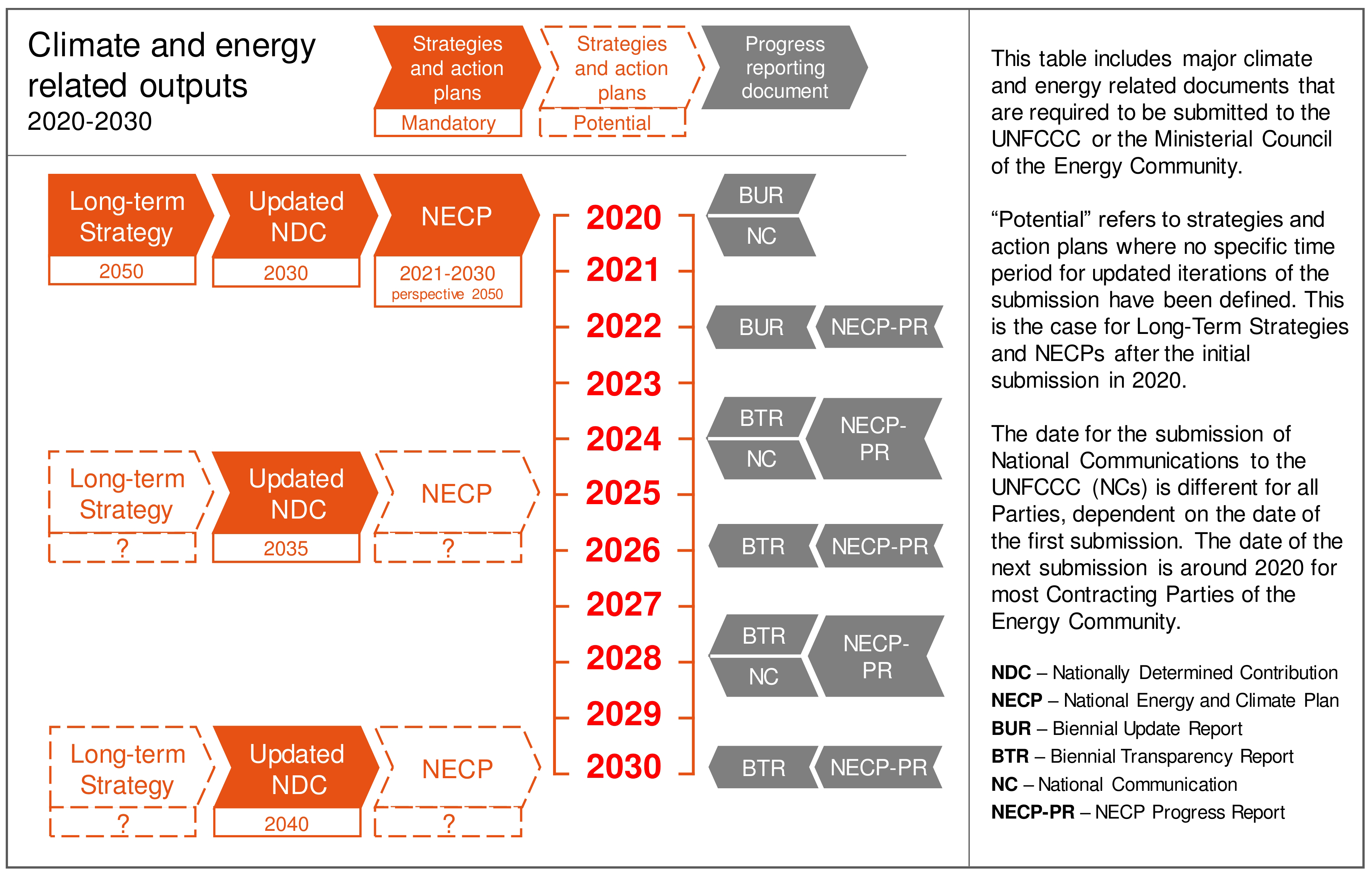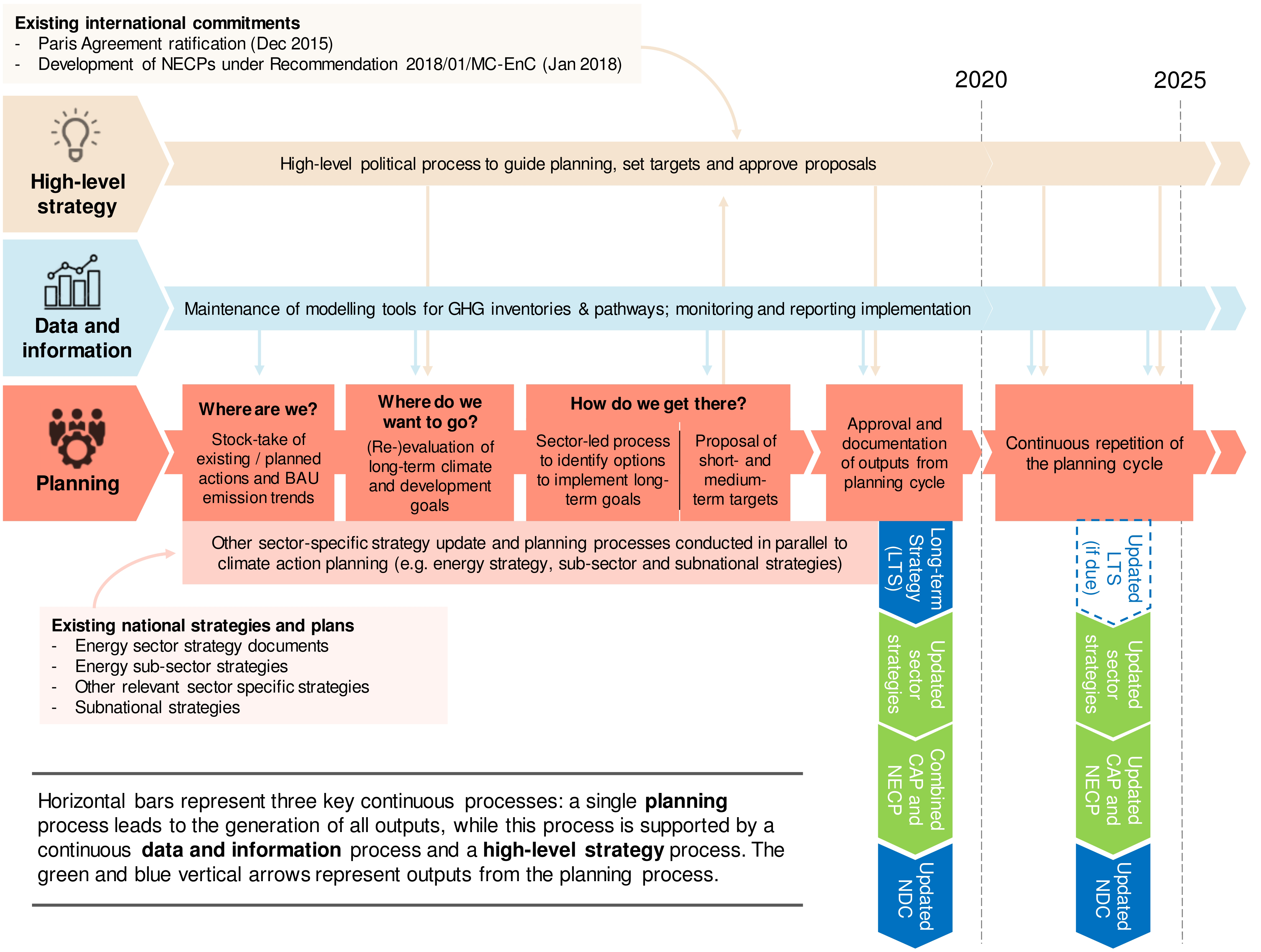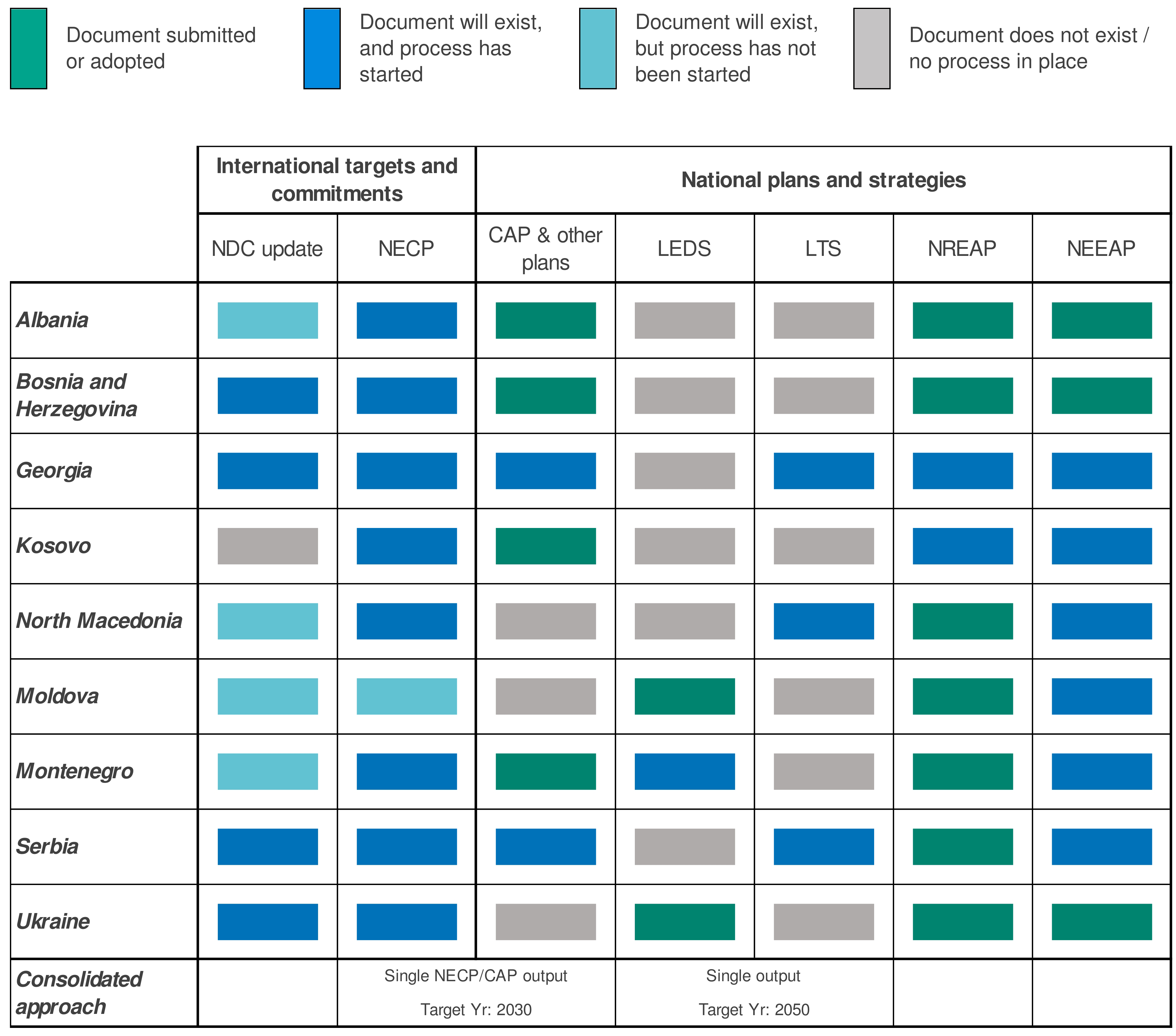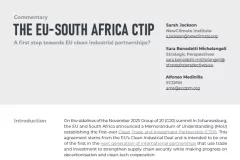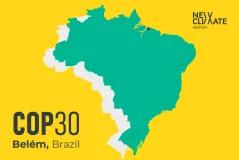This blogpost is based on a paper by NewClimate Institute.
Navigating the various international climate change planning and reporting processes and linking these to domestic processes for sector-level decarbonisation planning can be an enormous challenge. Many climate-related planning and reporting processes have been started in a relatively short time, there are limited resources available, and time is of great importance.
This blogpost shows how countries could consolidate multiple climate change planning processes and international climate commitments into one single process, ensuring efficiency and alignment. Although the analysis is focussed on the Energy Community countries, many of the suggestions relate to international commitments or national strategies and documents that are common across countries around the world.
Starting point
The “Energy Community” is an international organisation which brings together the European Union and its neighbours to create an integrated pan-European energy market. Its objective is to extend the EU internal energy market rules and principles to the nine Contracting Parties – Albania, Bosnia and Herzegovina, Georgia, Kosovo*, North Macedonia, Moldova, Montenegro, Serbia and Ukraine – on the basis of a legally binding framework.
Contracting Parties of the Energy Community have recently committed to monitoring and reporting in the areas of renewables, energy efficiency, and greenhouse gas emissions by developing and adopting national energy and climate plans (NECPs) covering the period from 2021–2030. At the same time, countries have other energy and climate related planning processes running, sometimes to comply with international commitments and others for the purpose of formalising climate action at the national level; for example, they might also need to develop Nationally Determined Contributions (NDCs), Long-Term Strategies (LTS), National Energy Efficiency Action Plans (NEEAPs), National Renewable Action Plan (NREAP), and others.
In this context, it is possible to consolidate their multiple climate change planning processes and international obligations into one single process, ensuring efficiency and alignment. Recommendations can be given in two streams: how to best align climate related outputs and how to best align climate related processes.
Aligning outputs
The timing of strategies and action plans can be aligned. A large number of outputs are required in the 2019-2021 period, including NDCs, LTS and the NECP; since these outputs all relate to one another, the timing could be aligned so that all outputs are produced efficiently from one process by 2020. It would be highly beneficial from a planning perspective if the revision cycle for the long-term strategies and NECPs would also be aligned with the revision cycle of the NDC, and if the timing of reporting documents can be planned to inform these update cycles.
Reporting documents can be combined. The number of reporting documents can be reduced by merging these into a single reporting document every two years. The UNFCCC has confirmed that Biennial Transparency Reports (BTRs) may be combined into a single document with National Communications, whilst the Ministerial Council of the Energy Community also recommends that the implementation of Progress Reports for the NECP are linked to the UNFCCC reporting requirements. This could be approached by producing one single document that includes the requirements and serves the purposes of both the UNFCCC and the Ministerial Council, even though the scope of the requirements for each purpose may be beyond the scope required for the other, thus reducing the number of documents produced and saving valuable resources.
Figure 1: Overview of timing for mandatory climate-related outputs between 2020 and 2030
Aligning processes
To successfully consolidate the development of climate strategies and plans into a single planning process, three main aspects need to be taken into account: the planning process itself, data and information sources and the high-level strategy.
A single consolidated planning process. The updated NDC, the NECP and the LTS can all be produced from one planning process; in other words, a separate planning process is not needed for each individual output. A good framework for the planning process should consider questions similar to those of the Talanoa Dialogue and the Global Stocktake: Where are we? Where do we want to go? and How do we get there? Much of this planning process will be discussed and determined at the sector level, which requires the development of permanent and continuous planning groups at the sector level.
A parallel process for maintaining data and information. Without centralised data and information, access to it can be disjointed, and technical analysis can be unknowingly duplicated for different purposes or even not conducted due to limited available resources. Centralising climate-related data under the responsibility of one coordinating institution can ensure that different stages of the planning process have access to the most up-to-date information available.
A high-level strategy. A continuous and formally established high-level political process can provide a mandate for the performance of the planning process and efficiently inform and review proposals for action. A key point is to recognise and allow for the planning to be a continuous cycle, to ensure that short-term action plans, mid-term targets and other outputs can be updated at regular intervals.
Figure 2: Overview of a consolidated climate and energy strategy and action planning process
Key takeaways
The findings of our recent analysis show that there is an overlap between many climate related processes in all Contracting Parties of the Energy Community, offering good opportunities for consolidation. In some countries, data collection, sector stakeholder engagement, mitigation analysis, and strategy formulation can be undertaken within the same process to inform several outputs. For example, NDC updates can be international reporting documents based on the latest NECP or other national Climate Action Plans or Strategies. Similarly, countries can make use of Progress Reports when writing National Communications (NC) to the UNFCCC and vice versa. Finally, Contracting Parties should clearly defined roles and mandates for cross-ministerial coordinating bodies and working groups to accelerate action and facilitate implementation.
Figure 3: Overview of climate planning processes in the Energy Community Contracting Parties
*This designation is without prejudice to positions on status, and it is in line with UNSCR 1244 and the ICJ Opinion on the Kosovo declaration of independence.

